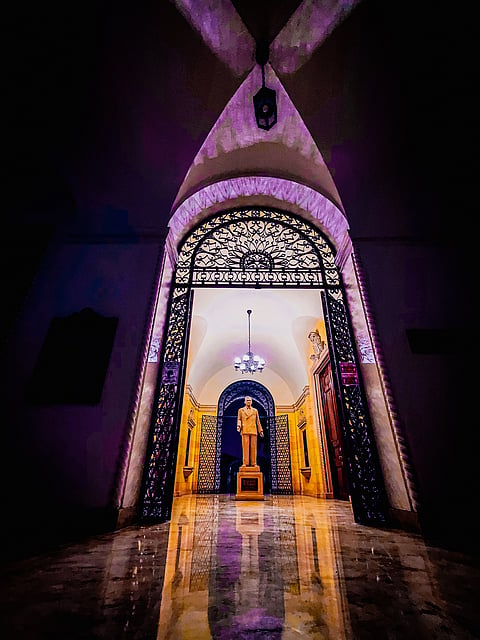
- NEWS
- the EDIT
- COMMENTARY
- BUSINESS
- LIFE
- SHOW
- ACTION
- GLOBAL GOALS
- SNAPS
- DYARYO TIRADA
- MORE

Most employees at Malacañang Palace and its surrounding areas know not to work overtime or stay in their respective offices after regular working hours.
This is not due to laziness or a desire to take advantage of the shuttles that the Office of the President provides to drop them off at all cardinal points of Metro Manila.
Instead, it has more to do with ghost stories, as several ghosts are said to have inhabited the buildings on Jose P. Laurel Street for decades.
In 1750, a Spanish aristocrat named Don Luis Rocha commissioned the construction of Malacañang as his personal summer residence. The government bought the establishment in 1825, but it became the official seat of government in the 1863 earthquake that destroyed the Spanish governor-general's formal residence.
The Palace's 9,000 square meters and 60 rooms (including bathrooms) have been home to presidents Manuel Quezon, Jose P. Laurel, Sergio Osmeña, Manuel Roxas, Elpidio Quirino, Ramon Magsaysay, Carlos Garcia, Diosdado Macapagal, Ferdinand Marcos Sr., Gloria Macapagal-Arroyo and Rodrigo Duterte.
Historian Ambeth Ocampo even said in one report that the main palace house has been "Exorcised not once, but twice!"
Not surprisingly, given that the Marcos family spent 20 years in the Palace, many of the anecdotes came from the Marcos children themselves.
Former President Duterte, upon being elected, mentioned several times during his term that he preferred sleeping in Bahay Pangarap, which is in Malacañang Park, instead of the Palace itself because of the "ghosts."
"I don't want to sleep (in Malacañang). All the ghosts that have passed through the Philippines are there. They will walk, they will compare notes, well, they're there. After all, we're in the past tense now. They're still there, and sometimes they'll hold a conference. We'll let them," Duterte said in May 2016.
The former President also said during the inauguration of a solar-powered irrigation system in M'lang, North Cotabato, in 2017 that he saw ghosts at the Palace even during daytime.
"I chose to stay on the opposite side (of the Palace) because the apparitions at Malacañang are known to manifest even during daytime," Duterte said.
"The ghost I see is an extremely pale Filipina," Duterte added, referring to a white lady.
Duterte mentioned that there is another spirit he perceives within the Palace who is seated in a rocking chair and is seen with a pipe.
Initially, the former President was not enthusiastic about staying in Malacañang due to what he described as an excessive number of doors, making it difficult to determine where each one led or what lay behind them.
As per an article published on the Malacañang website, it is reported that the spirits of former Presidents Quezon, Roxas and Magsaysay are believed to haunt the Palace.
The article also claimed the apparitions of children, victims of World War II, and an American chaplain known as "Mr. Brown," who was purportedly killed by Japanese soldiers during the war, had been sighted on the Palace grounds.
It is believed that the Palace served as the headquarters for the Japanese Army during World War II.
(To be continued)
